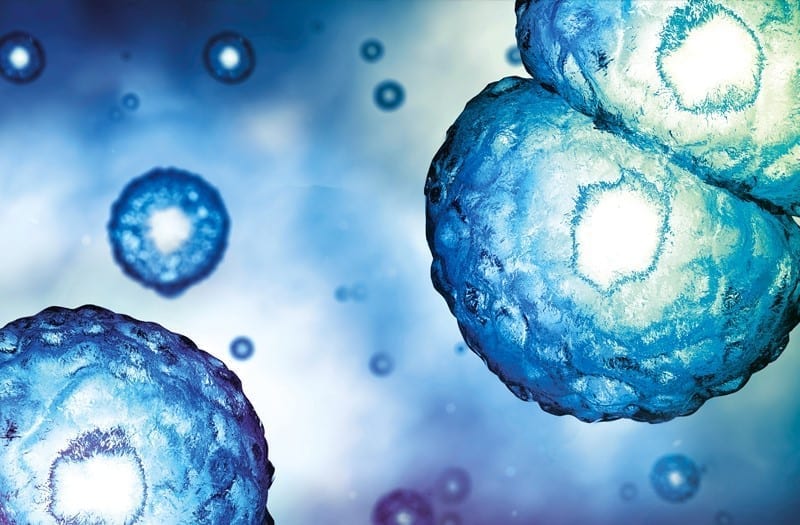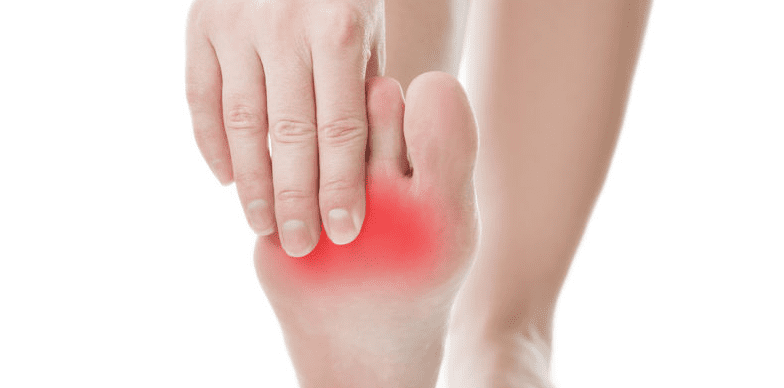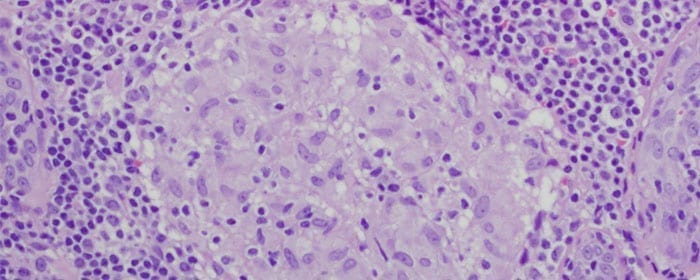
by admin | Jul 23, 2018 | Stem Cell Research, Stem Cell Therapy
Using growth factors to help stem cells differentiate into chondrocytes, or cartilage cells has been shown to be an effective way to maintain cartilage tissue. However, there are several different types of growth factors, and little has previously been known about which growth factors may be most beneficial for help stem cells differentiate in a way that supports cartilage.
New research published in Stem Cell Reviews has addressed this issue by looking specifically at how four specific growth factors affect differentiation of mesenchymal stem cells – and particularly – how they affect chondrogenic differentiation. The four growth factors explored in this study were: transforming growth factor beta 1 (TGF-β1), bone morphogenetic protein 2 (BMP2), parathyroid hormone-related protein (PTHrP), and fibroblast growth factor 2 (FGF2).
The scientists used methods of analyzing the levels of growth factors as well as the extent of collagen content on days 16, 23, and 30 after implementing growth factor programs. The results showed that TGF-β1 and BMP-2, when used in combination, increased short-term collagen content and other indicators of well-maintained cartilage. When PTHrP or FGF2 was applied, the overall impact of TGF-β1 and BMP-2 on cartilage tissue was initially decreased. Nonetheless, successive applications of both PTHrP and FGF2 helped to maintain the effects of TGF-β1 and BMP-2.
These results help to clarify the ways in which growth factors can be used to improve the ability of bone marrow derived mesenchymal stem cells to differentiate into cells that are viable for supporting cartilage. The specific outcomes provide critical information that can help with protocols for chondrogenic differentiation of stem cells. Future research will likely build on these findings to help scientists and clinicians better understand the best formulas for how to use growth factors to achieve desired results with stem cells.

by admin | Jul 19, 2018 | Stem Cell Research, Stem Cell Therapy, Studies
Under normal circumstances, pain receptors react to painful stimuli such as burns or lacerations. Pain receptors from the body then send that information along nerves to the brain via electrical signals. Once that electrical information reaches the brain (which happens almost immediately), it is perceived as pain. This type of pain is a nociceptive pain.
Neuropathic pain, however, is different. Neuropathic pain is caused by a condition of the nerves themselves. Patients with neuropathic pain experience chronic pain without any specific injury. Neuropathic pain may be felt as a burning sensation, tingling, or a “pins and needles” sensation, or these combined. Neuropathic pain most often occurs in people with diabetes, certain vitamin deficiencies, and shingles. It may also occur after people receive certain cancer treatments following a stroke.
While it is rather simple to treat pain caused by a burn or laceration (nociceptive pain), it is very difficult to effectively treat neuropathic pain. Standard treatments for neuropathic pain include anti-epilepsy medications such as phenytoin, gabapentin, or carbamazepine and antidepressants such as venlafaxine, duloxetine, or amitriptyline. Usually, these treatments are only modestly effective. Eventually, many patients need powerful opioid medications like morphine and oxycodone to control their pain.
Researchers at the Cleveland Clinic published research that strongly suggests that stem cells may be able to improve those battling neuropathic pain. Dr. Jianguo Cheng and his research group have shown that mesenchymal stem cell transplantation into the spinal fluid can reduce pain and pain sensitivity in an animal model of neuropathic pain. In one series of experiments, they showed that mesenchymal stem cells could relieve pain in rats who had experimental nerve damage. Researchers confirmed the benefit of stem cells for neuropathic pain in several different sets of experiments. The results have been so encouraging that Dr. Cheng and the Cleveland Clinic have applied to patent the technology.
Dr. Cheng’s group also showed intravenously administered mesenchymal stem cells are just as effective as cells administered into the spinal fluid (intrathecally). This is good news for patients since it is less invasive to put stem cells into a vein than it is to infuse them into the cerebrospinal fluid. Amazingly, the research group showed that stem cells injected through either route (vein or spinal fluid) ended up finding their way to damaged nerves where they could provide maximum benefit.
While this work in animals must be performed in humans to confirm the results, this preclinical research establishes a strong foundation for those clinical studies. These results provide hope to those who struggle with daily neuropathic pain.

by admin | Jun 29, 2018 | Heart Failure
You may be familiar with the word systolic as the top number in blood pressure measurement. But systolic also refers to the portion of the heartbeat in which the heart produces the most squeezing force. People with systolic heart failure are not able to squeeze enough blood out of the heart, resulting in a reduced left ventricular ejection fraction. Systolic heart failure may cause symptoms such as fatigue, swollen ankles, wheezing, and shortness of breath, among others. Treatments to improve the heart’s ability to squeeze can help reduce the symptoms but unfortunately, those treatments are not always effective due to the damage of the heart. Since stem cells offer the promise of repairing damaged heart muscle, researchers have been examining ways in which stem cells can help treat symptomatic systolic heart failure.
Stem cell research focused on the treatment of systolic heart failure has been particularly robust. A recent systematic review article analyzed results of 29 published clinical studies showing the benefits of autologous bone marrow-derived mesenchymal stem cells in patients with symptomatic systolic heart failure. The study authors found that people treated with bone marrow-derived stem cells had significantly better left ventricular ejection fractions. In other words, the hearts of stem cell-treated patients were able to squeeze more blood during systole. Interestingly, stem cells appear to help a patient to regain function from damaged heart tissue—something that is not possible with other heart failure treatments. This research shows that with stem cell treatment, the heart can result in better blood flow, decrease the areas of damaged heart tissue, and promote healthier heart muscle.
Perhaps more relevant for patients with this condition are the improvements in ejection fraction and heart function with tangible health benefits. Patients who received stem cell therapy had improved capacity to perform exercise after treatment and reported a higher quality of life. Stem cells also improved the patients’ New York Heart Association functional classification, which is a method of determining the severity of heart failure. Stem cell treatment has the potential to help patients with symptomatic systolic heart failure have less severe heart failure symptoms, better physical functioning, and improved quality of life.
Larger clinical trials are currently underway to determine the best type of stem cell for treating this condition, and the most effective way to administer those stem cells to patients. However, given the speed and enthusiasm of this research, patients may have the option to consider stem cell treatments for symptomatic systolic heart failure as a therapeutic option.

by admin | Jun 26, 2018 | Stem Cell Research
Sarcoidosis is a condition in which granulomas (non-cancerous masses) form in the body. While sarcoidosis can affect any organ, it most often affects the lungs and chest lymph nodes. The cause of sarcoidosis is unknown, but it is thought to relate to problems with the immune system. When sarcoidosis affects the lungs, patients often have coughing and wheezing, shortness of breath, and chest pain. In general, patients with sarcoidosis have a mild fever, joint swelling and pain, and extreme fatigue.
The standard treatment for sarcoidosis involves corticosteroids such as prednisone. While steroid treatment may be effective, patients with sarcoidosis often have relapses unless they stay on steroids chronically. Unfortunately, long-term oral steroid use can cause substantial side effects including weight gain, osteoporosis, a depressed immune system, fluid retention, acne and thinning skin, and possibly diabetes. Therefore, researchers are interested in finding better, safer, longer-acting sarcoidosis treatments.
Since placenta-derived mesenchymal stem cells can modulate the immune system, researchers tested whether they could use these cells to improve symptoms of chronic lung sarcoidosis. Four patients with severe pulmonary sarcoidosis received intravenous infusions of 300 million placenta-derived mesenchymal stem cells. The cells were split into two doses, given one week apart. Patients underwent several tests to evaluate safety and efficacy of the stem cell treatment including X-rays, lung function testing, bronchoscopy, and bronchoalveolar lavage.
Stem cell treatment was associated with a temporary increase in pulmonary artery blood pressure. Two years after treatment, lung function was the same as it was at the beginning of the study. Impressively though, two patients were able to stop prednisone treatment and had visible improvements in their lungs on X-ray. One patient underwent prolonged remission (i.e., had no symptoms from sarcoidosis for an extended time period).
Because of their long-term complications, chronic steroid use is not an ideal treatment for any condition. With stem cell treatment, patients with chronic lung conditions could potentially decrease or minimize their daily intake of prednisone.

by admin | Jun 11, 2018 | Stem Cell Research
Researchers have recently published their results from an experiment conducted to determine if a certain type of stem cell, called the umbilical cord-derived mesenchymal stem cell, has the potential for treating primary biliary cirrhosis. Primary biliary cirrhosis is a disease of the liver in which the bile ducts of the liver are increasingly destroyed over time.
In this disease, as the bile ducts are destroyed, bile and other toxins in the liver accumulate and lead to cholestasis. At this point, bile cannot flow out of the liver. Damage then occurs to the tissue of the liver, leading to scarring. As the scarring collects, excessive amounts of fibrous connective tissue form on the liver in what is called fibrosis. The late stage of fibrosis is known as cirrhosis, where the liver ceases to function properly.
The disease is autoimmune in nature, and because stem cells have shown promise for treating other types of autoimmune disease, presumably by impacting the activity of the immune system, researchers have reasoned that stem cells may also be beneficial for those suffering from primary biliary cirrhosis. In primary biliary cirrhosis, the body mistakes the liver, or aspects of it, as foreign and harmful and begins to attack it.
In their experiment, the scientists found that using umbilical cord-derived stem cells inhibited the problematic immune system activity associated with primary biliary cirrhosis. As a result, using umbilical cord-derived stem cells led to lower levels of problematic immune system components, as well as lower inflammation.
These results are a promising first step toward understanding how stem cells could potentially be used to treat primary biliary cirrhosis. As the research advances, it will become clearer how these cells can best be used to treat patients and how the cells have the impact they do on the liver and on disease progression.






 St. Petersburg, Florida
St. Petersburg, Florida
